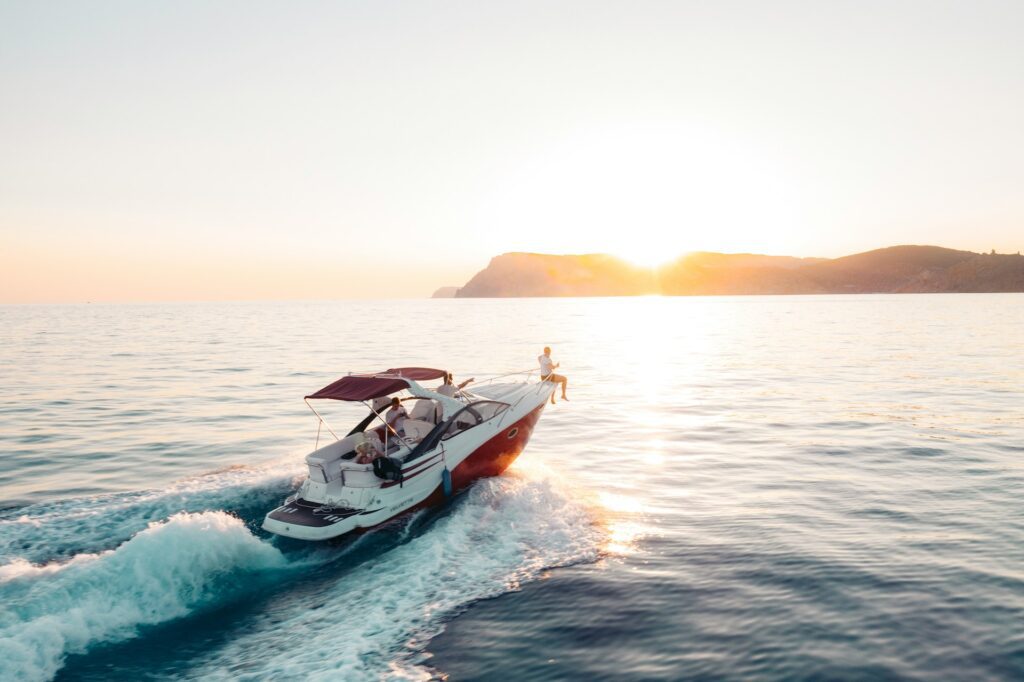Avoiding overloading your boat is critical for safe navigation and adhering to boating laws. This article demystifies what is the best way to avoid overloading your boat with actionable tips so you can focus on the horizon with peace of mind.
Key Takeaways
- Capacity plates provide crucial information regarding a boat’s maximum passenger numbers, load, and engine horsepower limits; following these guidelines is essential for safety and compliance with regulations.
- In the absence of a capacity plate, boat operators can use the boat capacity formula—length x width / 15—to estimate the safe passenger capacity, while accounting for the actual weight of passengers and onboard supplies to prevent overloading.
- Understanding and respecting both the maximum passenger capacity and the maximum weight capacity of a boat are vital to ensure safety and avoid legal repercussions; proper loading techniques and weather considerations are also key to maintaining boat stability.
Understanding Your Boat’s Capacity Plate
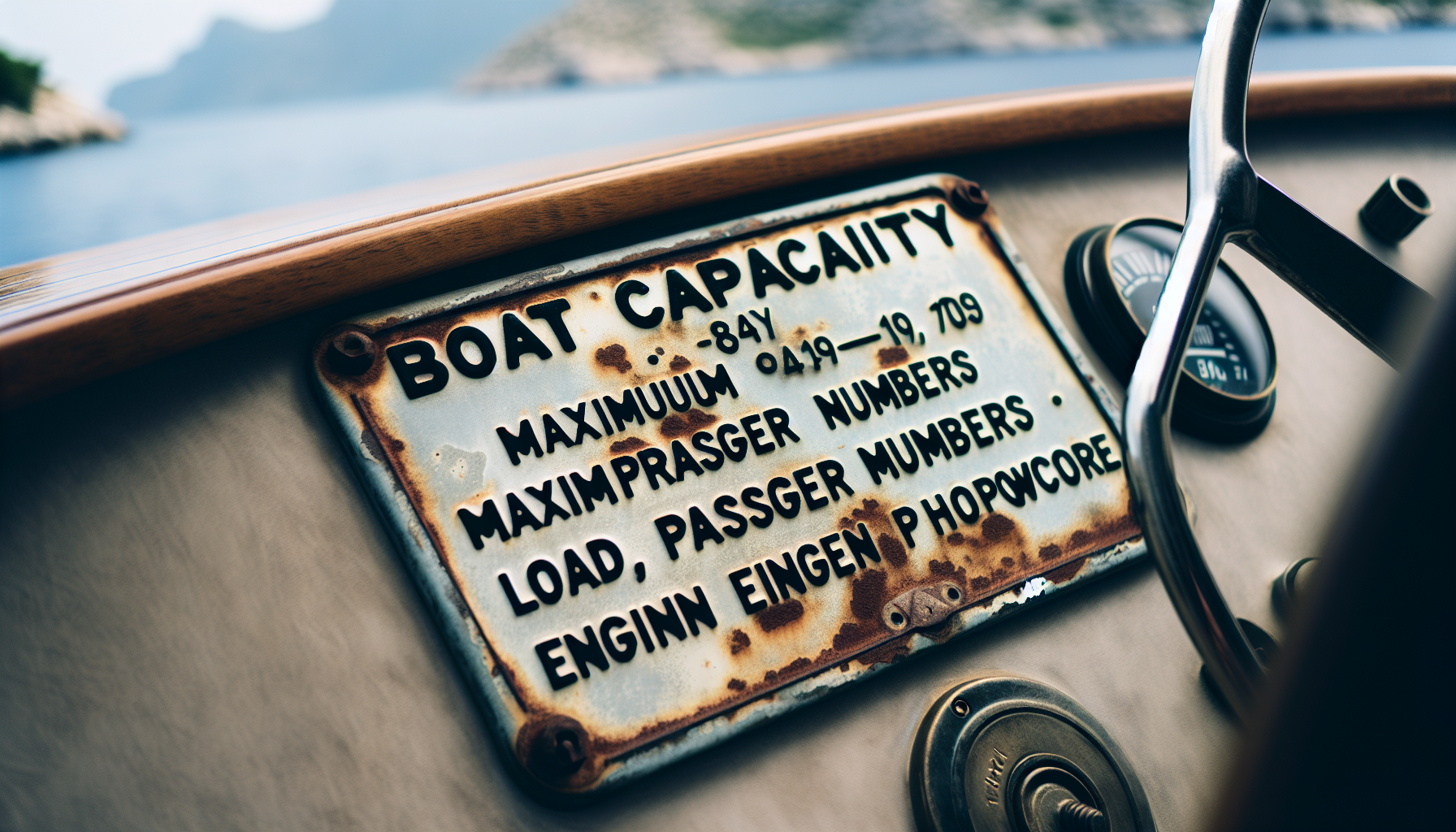
A boat’s capacity plate, usually found around the helm or on the transom, is a small yet critical asset, providing essential information for safe boating. This plate displays the maximum passenger numbers, load, and engine horsepower limits, ensuring both safety and compliance with the boat’s designed weight capacity and passenger limits.
Ignoring the information on the capacity plate could lead to an overloaded boat. Overloading a boat beyond the specified limits can result in unsafe conditions, potentially leading to injury, and may also constitute a breach of state regulations. Hence, it’s paramount to comprehend and respect the guidelines on your boat’s capacity plate for safety and legal reasons.
Even though smaller boats might seem capable of handling more load, being mindful of the weight capacity is crucial. The guideline is straightforward: don’t overload your boat. This practice not only adheres to the law but also assures a safe, pleasurable boating journey.
Locating the Capacity Plate
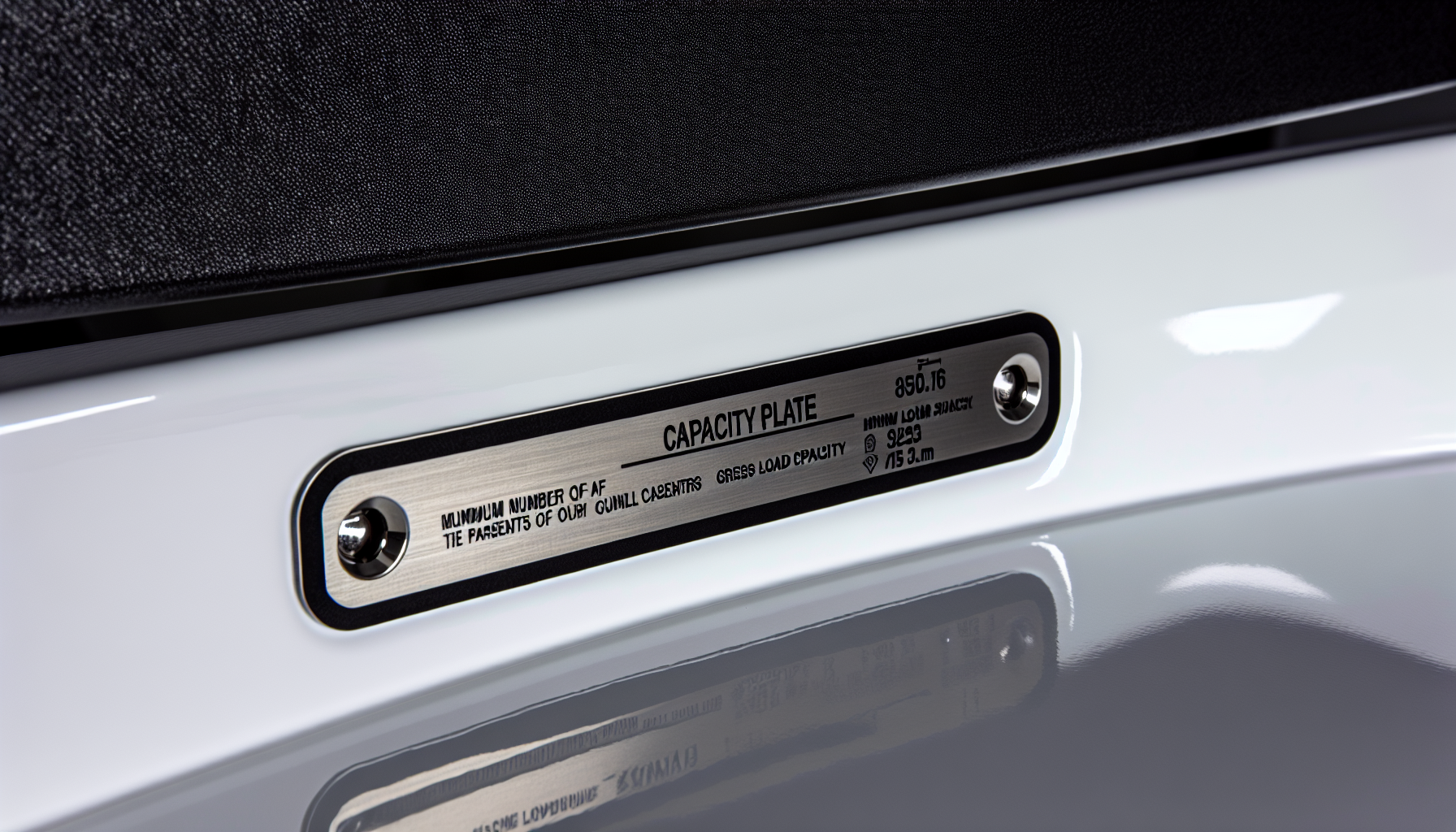
Now that we understand the importance of a boat’s capacity plate, the question arises: where can you find it? Typically, the capacity plate is located near the operator’s position or on the transom of the boat, especially on small boats or those where it is relevant for operation.
This plate, located on the flat rear portion of the boat, is plainly visible for a reason. It provides crucial details such as the maximum number of adults, maximum gross load that the vessel can carry, and the maximum permissible engine size in horsepower. Immediate access to this data aids in meeting loading regulations, aids in preventing overloading, and contributes to your boat’s equilibrium.
Boat Capacity Formula and Its Application
But what if your boat doesn’t have a capacity plate? Don’t worry. That’s where the boat capacity formula comes into play. This formula, which is length x width / 15, is utilized to calculate the maximum number of people that can safely be accommodated on a boat without a capacity plate.
To apply this formula, measure your boat’s length and width in feet, and then use the formula to determine the passenger capacity. Bear in mind that manufacturers generally assume an average weight of 150 pounds per person to calculate maximum capacity.
Nevertheless, it’s imperative to modify the capacity formula based on the actual weight of passengers and any extra supplies onboard to prevent overloading. So, before you set out on your next boat trip, use this formula to ensure that you’re not overloading your boat.
Maximum Passenger Capacity vs Maximum Weight Capacity
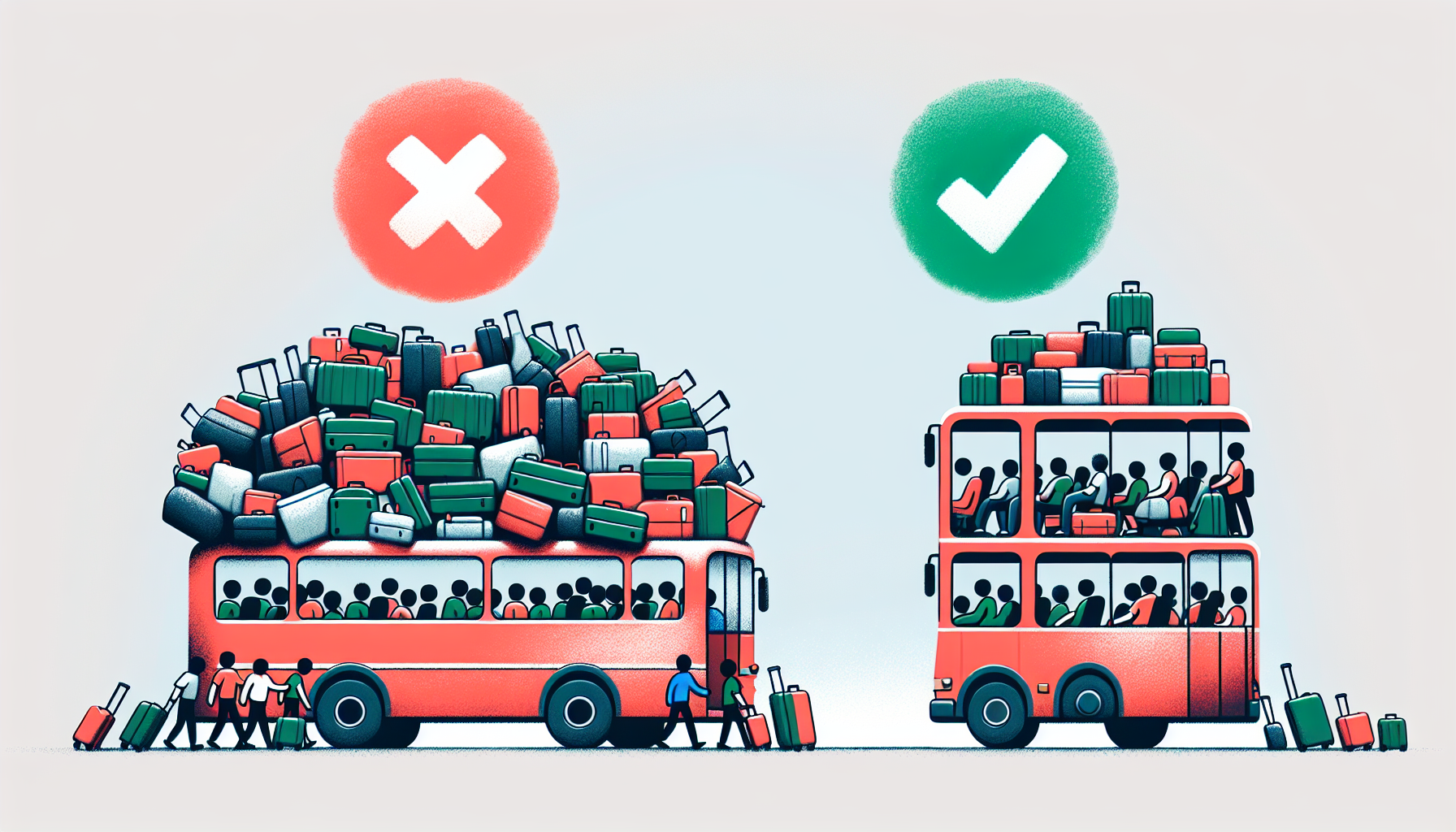
A common misconception is that the maximum passenger capacity and boat’s weight capacity are the same. However, the two are distinct and crucial to understand for safe boating. The maximum weight capacity of a boat includes the total weight it can safely manage, accounting for passengers, gear, and provisions.
On the other hand, the maximum passenger capacity refers to the maximum number of passengers that a boat can safely carry. Exceeding either of these capacities can result in violations and citations for reckless boating in many states.
Thus, for excursions with many participants, it might be wiser to employ multiple boats to adhere to the safe weight and passenger capacity guidelines. Remember, more weight doesn’t mean more fun. In fact, too much weight could spell disaster, so it’s important to distribute all the weight evenly across the boats.
Proper Loading Techniques
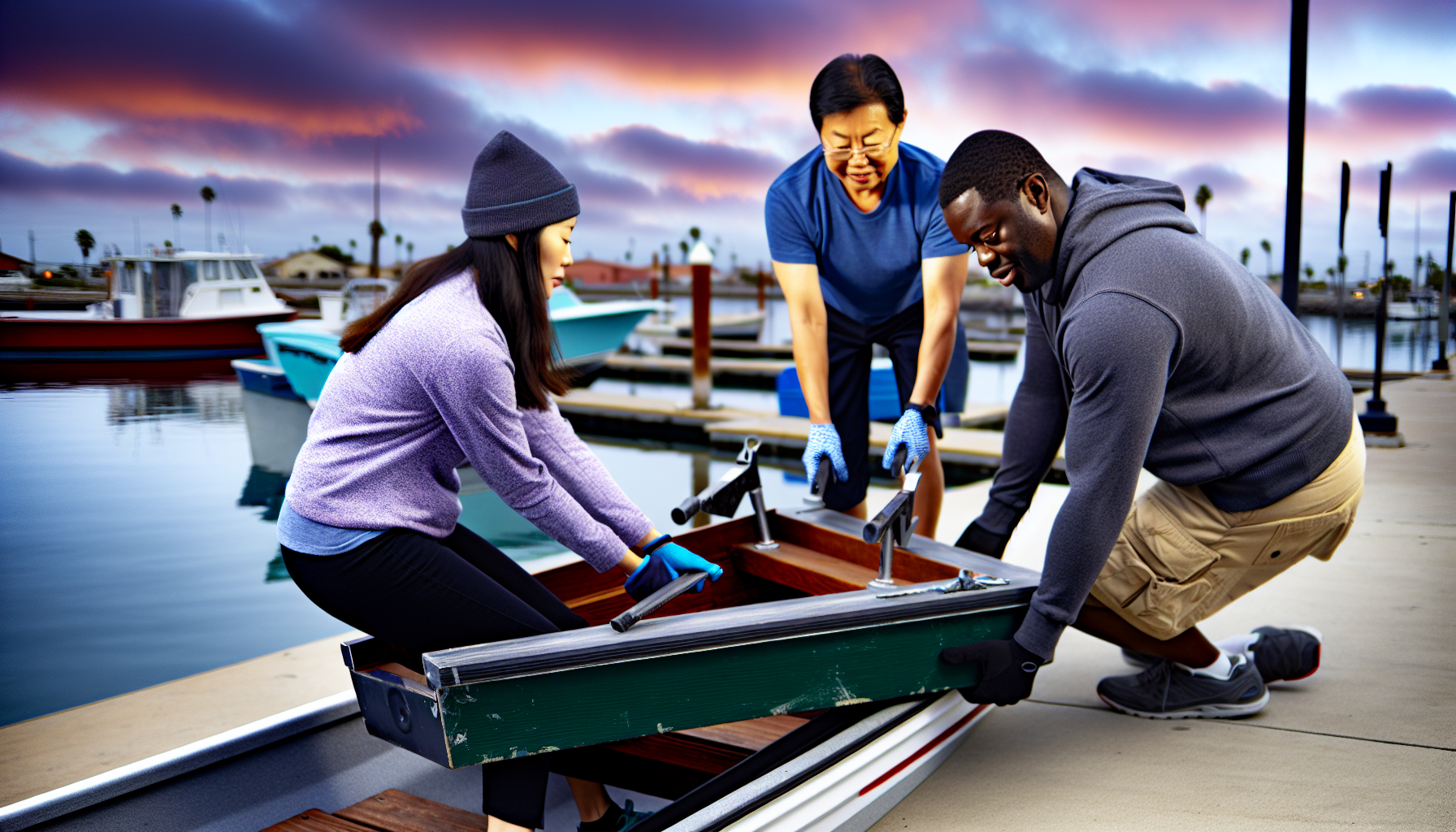
Loading a boat might seem as simple as putting items on board. However, how you load your boat can significantly impact its stability and safety. For instance, heavy items such as furniture or coolers should be secured near the center of the boat using tie-downs, ropes, clamps, chains, or hooks to prevent them from sliding around when in motion. Ensuring a boat stable loading process is essential for a smooth and secure journey.
Uneven weight distribution in a boat can cause imbalance, making it more likely to tip over. This can increase the risk of capsizing. Hence, it’s recommended to distribute weight evenly across the boat. Additionally, during the loading process, it’s vital to keep track of what is being loaded on the boat and confirm it doesn’t surpass the weight limit.
Assessing the weight distribution of items onboard before every outing, ensuring heavy items are evenly distributed, can significantly decrease the risk of overloading and ensure a safe boat trip. Remember, the goal is to enjoy your boat trip, not to test your boat’s weight limits.
Weather Conditions and Their Impact on Boat Stability
Weather conditions can markedly affect your boat’s balance, and it’s vital to modify your load as needed. In adverse weather conditions or choppy waters, boaters are advised to carry lighter loads to maintain stability and control of the boat.
Moreover, even in rough waters, there are several important steps to take to ensure stability and prevent capsizing or swamping:
- Distribute weight evenly, particularly towards the boat’s center.
- Reduce speed.
- Close hatches.
- Position passengers low and near the boat’s centerline.
By following these guidelines, you can enhance stability and stay safe in challenging conditions.
Monitoring weather channels and local weather patterns, especially in unfamiliar waters, can help you avoid destabilizing conditions. Remember, in boating, safety should always come first. So, when the weather turns bad, knowing how to adjust your load and navigate can make all the difference.
Essential Safety Gear and Smart Packing
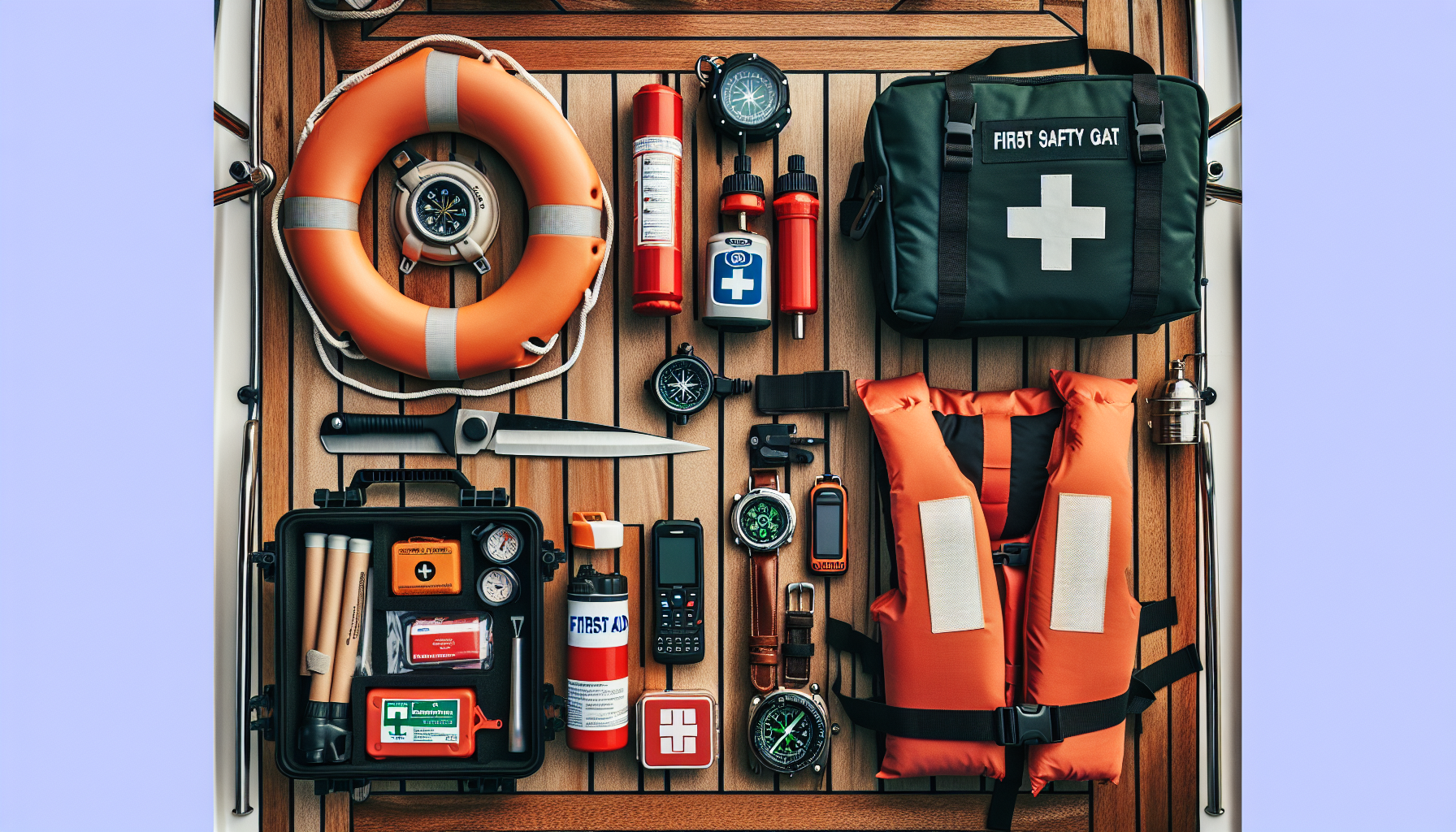
While it’s crucial to refrain from overloading your boat, it’s equally significant not to skimp on essential safety equipment. Items like:
- life jackets
- wearable PFDs
- throwable flotation devices
- fire extinguishers
- visual and sound signaling devices
should always be on board.
Smart packing can also help keep your boat’s load manageable. Here are some tips:
- Use a checklist for packing essentials
- Choose lightweight and compact items
- Reconsider the necessity of bulky items
- Manage the total load by providing weight allowances for passengers
- Ensure you’re carrying extra provisions for long trips
Ultimately, the key is to balance between carrying essential safety gear and avoiding unnecessary items that could lead to overloading. Remember, a well-packed boat is a safe boat.
Maintenance and Horsepower Recommendations
Routine upkeep and examinations can also assist in averting overloading problems. Checking oil, testing batteries, and conducting thorough inspections of the boat’s hull and structure for damage or wear are essential for preventing issues that could lead to unintentional overloading.
Maintenance also extends to the boat’s hull. Removing algae or barnacle build-up from the boat’s hull is vital for improving performance and fuel efficiency by reducing drag, which in turn helps to prevent overloading. Manual removal of barnacles using physical tools is recommended over pressure washing to avoid potential damage to the hull’s gel coat.
Remember, regular maintenance is not just about keeping your boat in good condition; it’s also about ensuring it can safely carry the load it’s designed for.
Handling Rough Seas and Emergency Situations
Navigating through rough seas can be challenging, especially with a loaded boat. Knowing how your boat reacts to rough sea conditions and how to effectively use trim tabs is essential for safe navigation.
In turbulent waters, decelerating and modulating the throttle assists in retaining control and avoiding water intake. Crew members should stay seated in safe areas to reduce the risk of injury during rough sea conditions.
In case of an emergency, it’s important to remember the following:
- Do not panic, as it can lead to poor decision-making.
- Keep a safe speed and heading, even if the journey takes longer.
- Remember, in the face of adversity, the safety of all on board should be the top priority.
Summary
From understanding your boat’s capacity plate to navigating through rough seas, we’ve covered a lot of ground on how to avoid overloading your boat. It’s clear that understanding the weight limits of your boat, appropriate loading techniques, and adjusting to weather conditions are all crucial for a safe and enjoyable boating experience.
But remember, at the end of the day, boating is about having fun. So, let’s keep it safe, adhere to the guidelines, and ensure that every boat trip is filled with joyous memories instead of avoidable mishaps. Happy boating!
Frequently Asked Questions
What is the best way to avoid overloading your boat?
The best way to avoid overloading your boat is to ensure that no one on the boat has more than 10 pounds of gear, maintain at least 10 inches of freeboard when fully loaded, and not exceed the limits listed on the capacity plate. Also, balance the load of all passengers and gear, and keep the center of gravity low by not allowing people to stand up or move around while underway.
How can you be sure that your boat is not overloaded?
To ensure your boat is not overloaded, always check the capacity plate near the helm or transom for the maximum weight limit. If the plate is not available, use the formula: number of passengers = boat length x boat width / 15, and never exceed the calculated maximum capacity.
What is a boat’s capacity plate?
A boat’s capacity plate provides important information about the maximum number of passengers, gross load, and engine size, helping ensure safe operation.
How do I calculate the maximum number of people that can safely be accommodated on a boat without a capacity plate?
You can calculate the maximum number of people that can be accommodated on a boat without a capacity plate by using the boat capacity formula: length x width / 15.
What should I do to maintain stability in rough seas?
To maintain stability in rough seas, reduce speed, close hatches, and position passengers low and near the boat’s centerline to enhance stability. These measures can help ensure safety and comfort during challenging conditions.

